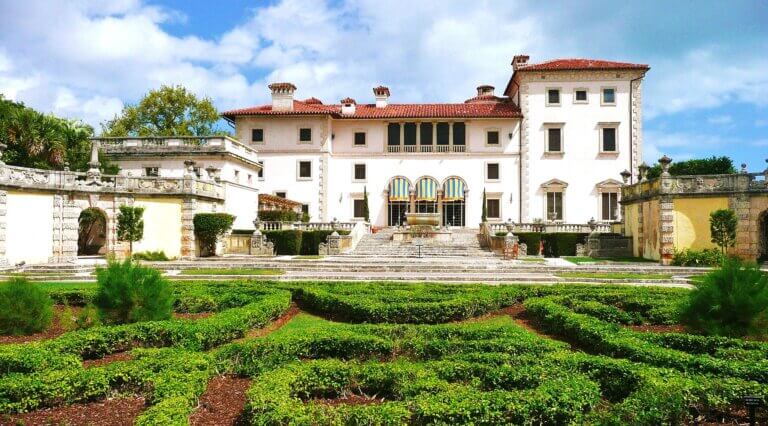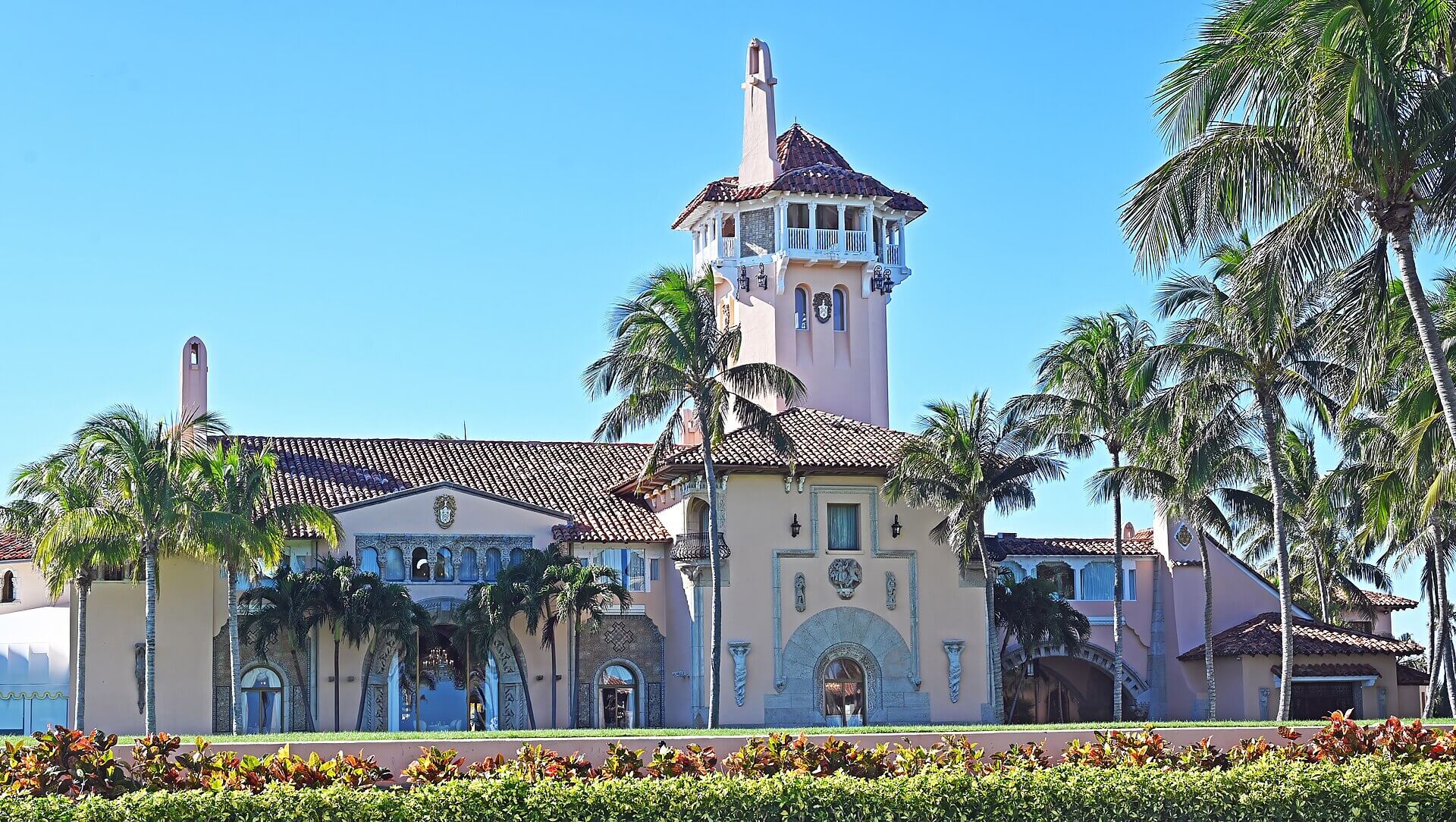Discovering the Charm of Mediterranean Revival Architecture

Mediterranean Revival architecture beckons with its timeless allure, transporting us to sun-drenched coastal villas and grand estates. Originating in the late 19th century, this style draws inspiration from the romanticism of Southern Europe, particularly the regions surrounding the Mediterranean Sea. Characterized by stucco walls, red-tiled roofs, and ornate detailing, this architectural style evokes a sense of luxury and elegance.
Let’s embark on a journey to explore its rich history, its prevalence in the United States, and iconic homes that epitomize this captivating architectural style.
The Origins of the Mediterranean Revival Style
The roots of Mediterranean Revival architecture can be traced back to the late 19th century when architects, inspired by the picturesque landscapes and historic buildings of Mediterranean countries, sought to recreate their charm elsewhere. The style gained prominence in the United States during the early 20th century, fueled by the nation’s growing fascination with exotic and romantic architectural forms.
The Characteristics of Mediterranean Revival Architecture
Mediterranean Revival architecture boasts several distinctive features that set it apart. Stucco exteriors, often in warm earth tones, lend a sense of rustic elegance, while red-tiled roofs add a vibrant pop of color against the backdrop of blue skies. Arched windows and doorways, wrought iron balconies, and decorative detailing such as colorful tiles and intricate carvings further enhance the style’s Mediterranean flair.
Exploring the Mediterranean Revival Style Across the United States

From coast to coast, this architectural style has left an indelible mark on the American landscape. In Florida, cities like Coral Gables and Palm Beach are renowned for their abundance of Mediterranean Revival homes, showcasing the style’s adaptability to the subtropical climate. The iconic Biltmore Hotel in Coral Gables stands as a testament to the grandeur of this architectural style, with its Spanish-inspired façade and lush gardens.
On the West Coast, California boasts numerous examples of Mediterranean Revival architecture, particularly in cities like Santa Barbara and Pasadena. The iconic Hearst Castle, perched atop a hill overlooking the Pacific Ocean, epitomizes the opulence and extravagance of this style, with its sprawling grounds and lavish interiors.
Even in landlocked states like Texas, Mediterranean Revival homes dot the landscape, offering a glimpse into a bygone era of elegance and sophistication. The McNay Art Museum in San Antonio, housed in a stunning Mediterranean mansion, showcases both art and architecture in perfect harmony.
Iconic Homes that Are Worth Touring
For aficionados of Mediterranean Revival architecture, there are several iconic homes across the United States that are well worth exploring. The Villa Vizcaya in Miami, Florida, pictured in this article’s cover photo, transports visitors to the Italian Renaissance with its opulent interiors and meticulously landscaped gardens.

In Palm Beach, Florida, the Mar-a-Lago estate, once owned by business magnate and former president Donald Trump, showcases the grandeur and splendor of Mediterranean Revival architecture on a monumental scale. Visitors can marvel at its ornate façade, expansive grounds, and breathtaking ocean views.
Conclusion
Mediterranean Revival architecture continues to captivate and inspire with its timeless beauty and romantic allure. From its origins in Southern Europe to its widespread influence across the United States, this architectural style remains a cherished emblem of luxury and sophistication. Whether exploring historic homes or strolling through vibrant neighborhoods, the charm of this architectural style never fails to enchant and delight.
Main image source: Wikipedia
Mediterranean Revival architecture beckons with its timeless allure, transporting us to sun-drenched coastal villas and grand estates. Originating in the late 19th century, this style draws inspiration from the romanticism of Southern Europe, particularly the regions surrounding the Mediterranean Sea. Characterized by stucco walls, red-tiled roofs, and ornate detailing, this architectural style evokes a sense of luxury and elegance.
Let’s embark on a journey to explore its rich history, its prevalence in the United States, and iconic homes that epitomize this captivating architectural style.
The Origins of the Mediterranean Revival Style
The roots of Mediterranean Revival architecture can be traced back to the late 19th century when architects, inspired by the picturesque landscapes and historic buildings of Mediterranean countries, sought to recreate their charm elsewhere. The style gained prominence in the United States during the early 20th century, fueled by the nation’s growing fascination with exotic and romantic architectural forms.
The Characteristics of Mediterranean Revival Architecture
Mediterranean Revival architecture boasts several distinctive features that set it apart. Stucco exteriors, often in warm earth tones, lend a sense of rustic elegance, while red-tiled roofs add a vibrant pop of color against the backdrop of blue skies. Arched windows and doorways, wrought iron balconies, and decorative detailing such as colorful tiles and intricate carvings further enhance the style’s Mediterranean flair.
Exploring the Mediterranean Revival Style Across the United States

From coast to coast, this architectural style has left an indelible mark on the American landscape. In Florida, cities like Coral Gables and Palm Beach are renowned for their abundance of Mediterranean Revival homes, showcasing the style’s adaptability to the subtropical climate. The iconic Biltmore Hotel in Coral Gables stands as a testament to the grandeur of this architectural style, with its Spanish-inspired façade and lush gardens.
On the West Coast, California boasts numerous examples of Mediterranean Revival architecture, particularly in cities like Santa Barbara and Pasadena. The iconic Hearst Castle, perched atop a hill overlooking the Pacific Ocean, epitomizes the opulence and extravagance of this style, with its sprawling grounds and lavish interiors.
Even in landlocked states like Texas, Mediterranean Revival homes dot the landscape, offering a glimpse into a bygone era of elegance and sophistication. The McNay Art Museum in San Antonio, housed in a stunning Mediterranean mansion, showcases both art and architecture in perfect harmony.
Iconic Homes that Are Worth Touring
For aficionados of Mediterranean Revival architecture, there are several iconic homes across the United States that are well worth exploring. The Villa Vizcaya in Miami, Florida, pictured in this article’s cover photo, transports visitors to the Italian Renaissance with its opulent interiors and meticulously landscaped gardens.

In Palm Beach, Florida, the Mar-a-Lago estate, once owned by business magnate and former president Donald Trump, showcases the grandeur and splendor of Mediterranean Revival architecture on a monumental scale. Visitors can marvel at its ornate façade, expansive grounds, and breathtaking ocean views.
Conclusion
Mediterranean Revival architecture continues to captivate and inspire with its timeless beauty and romantic allure. From its origins in Southern Europe to its widespread influence across the United States, this architectural style remains a cherished emblem of luxury and sophistication. Whether exploring historic homes or strolling through vibrant neighborhoods, the charm of this architectural style never fails to enchant and delight.
Main image source: Wikipedia







